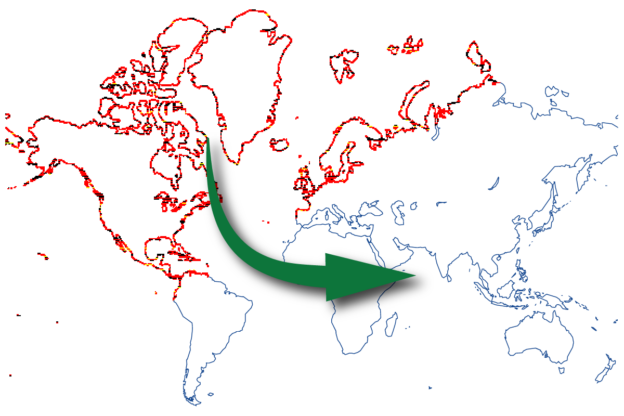The OpenStreetMap Foundation Board has selected Minh Nguyễn as the Core Software Development Facilitator. Here’s Minh to introduce himself, some of his ideas and directions, and opportunities to connect. Welcome, Minh!
Hi, I’m Minh Nguyễn, an OSM contributor and community organizer from California. The OSMF has entrusted me with one of the positions funded through the recently announced Sovereign Tech Fund (STF) investment to facilitate the further long-term development of OSM’s software infrastructure. I’m grateful for the opportunity to serve the OSM community in this way.
For those who don’t know me, I started volunteering for OSM way back in 2008, cleaning up errors in my hometown, Loveland, to cure a bout of homesickness. Then I got extremely carried away, adding little details here and there all over the Midwestern U.S., nurturing a little community of mappers in Silicon Valley, translating OSM into Vietnamese, and serving on the board of OpenStreetMap U.S. In parallel, I became a professional Mac software engineer, then helped build Mapbox’s open source, OSM-based map and navigation software for several years. But I never stopped being a mapper. I’ve also spent the last few years serving on the SDRP and OpenHistoricalMap’s advisory board and will continue in these roles.
When introducing OSM to my local community, I describe the project as infrastructure for the world’s maps. Naturally, this infrastructure has its own underlying infrastructure. Many of us rely heavily on the website frontend, API backend, and related tools while mapping, debugging our map data, and generally marveling at what we’re building together. There’s a lot that goes on behind the scenes to make the site run smoothly and supply data consumers with the artifacts they depend on. For example, did you know we have not one but two overlapping API implementations running simultaneously to eke out extra performance? These aspects of OSM are less glamorous than map styles or editors but no less important.
Our software architecture is very specific to OSM, so we’ve historically relied on a relatively small number of volunteers and their domain expertise. As an open source project, we want to expand this group and keep it open to newcomers. In conjunction with longtime contributors, I’ll be prioritizing better documentation, wrangling the issue backlog, articulating a clear vision and roadmap for the core software projects, and identifying opportunities for new developers to get started and gain a foothold. This will be essential as we later onboard another role tasked more directly with daily development tasks through the same STF investment. We’ll have more to share about that in the coming months.
Lately, anyone watching the core software projects closely will have noticed the pace of development picking up dramatically, but much of it still goes unannounced and unnoticed by the rest of the community. You’re going to hear from me pretty regularly as I relate the projects’ news and current affairs for a broader audience. It’s my hope that more of you in the community will be familiar with these projects, similar to your favorite renderer or editor, and hopefully for good reasons.
As I’m making the rounds introducing myself to those involved with the core software projects, it strikes me how many ideas there are about how to move them forward and how much these ideas overlap. Over the next few weeks, I’ll also be seeking feedback from the community about where we should be headed; watch the forum for more details. While I can’t promise anything concrete at this early stage, I’m hopeful we can weave a common future for these projects that allows OSM to thrive.

